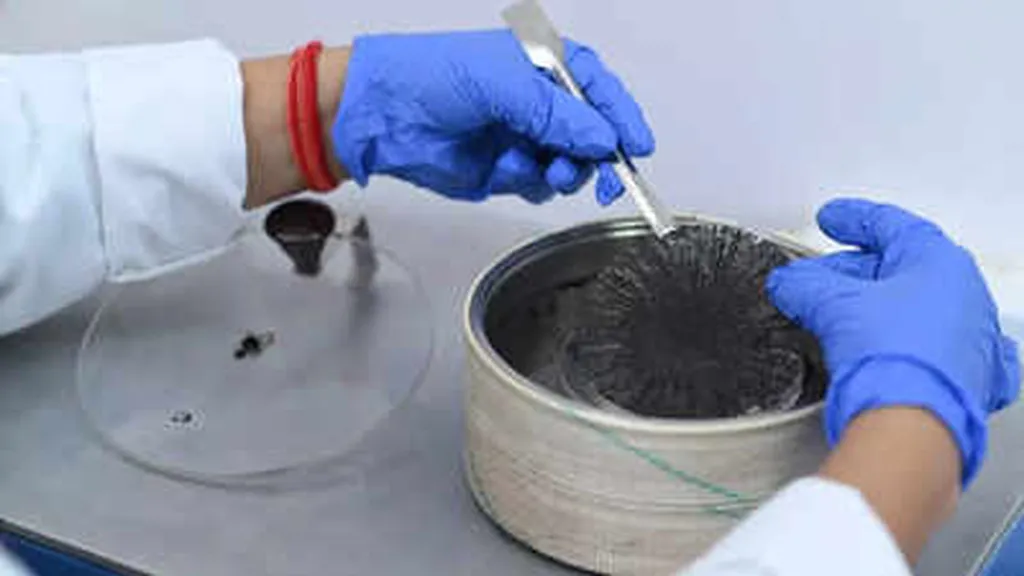In a breakthrough that could have significant implications for maritime industries, researchers have developed a novel nanocomposite material that shows promising photocatalytic and antibacterial properties. The study, led by T. Sathishpriya from the Department of Science & Humanities (Physics) at Loyola Institute of Technology in Chennai, India, focuses on magnesium-doped calcium carbonate/polymethyl methacrylate (CaCO3/PMMA) nanocomposites.
The researchers synthesized these nanocomposites using a green approach, leveraging natural dolomite rock as a source of CaMg(CO3)2. This method not only makes the process more environmentally friendly but also ensures a sustainable supply of raw materials, which is particularly relevant for industries looking to reduce their carbon footprint.
The nanocomposites were characterized using various spectroscopic techniques, revealing impressive optical properties. The optical band gap energy values ranged from 1.9 to 2.9 eV, indicating their potential for efficient light absorption and energy conversion. The study also confirmed the presence of a rhombohedral crystalline structure of CaCO3 in the calcite polymorph, with crystallite sizes around 40 nm.
One of the most exciting findings was the material’s ability to degrade malachite green dye. The 0.02 mol Mg-doped CaCO3/PMMA nanocomposites showed an 86.23% degradation rate within 150 minutes, with a rate constant of 0.0103 min-1. This suggests that the material could be highly effective in treating wastewater, a critical concern for maritime industries that often deal with large volumes of water.
The antibacterial activity of the nanocomposites was also noteworthy. The 0.06 mol Mg-doped CaCO3/PMMA nanocomposites demonstrated high efficacy against both gram-positive and gram-negative bacteria, including Staphylococcus aureus, Streptococcus pyogenes, Klebsiella pneumoniae, and Escherichia coli. The maximum zone of inhibition was 21.25 mm at a dose concentration of 100 μg/ml, indicating strong potential for use in antimicrobial coatings and treatments.
For maritime professionals, these findings open up several opportunities. The photocatalytic properties of the nanocomposites could be harnessed for water treatment systems on ships, ensuring cleaner and safer water supplies. The antibacterial properties could be utilized in coatings for ship hulls, reducing biofouling and the need for harmful antifouling paints. Additionally, the material’s sustainability aligns with the growing emphasis on eco-friendly practices in the maritime industry.
As Sathishpriya noted, “These findings demonstrate that Mg-doped CaCO3/PMMA nanocomposites are ideal as sustained photocatalysts and suitable for biological applications.” The study, published in the journal ‘Chemical Physics Impact’ (translated to ‘Chemical Physics Impact’ in English), highlights the potential of these nanocomposites to address critical challenges in the maritime sector, from water treatment to biofouling prevention.
In an industry where innovation and sustainability are increasingly intertwined, this research offers a glimpse into the future of maritime technology. By leveraging advanced materials like Mg-doped CaCO3/PMMA nanocomposites, maritime professionals can look forward to more efficient, eco-friendly, and effective solutions for their operational needs.

